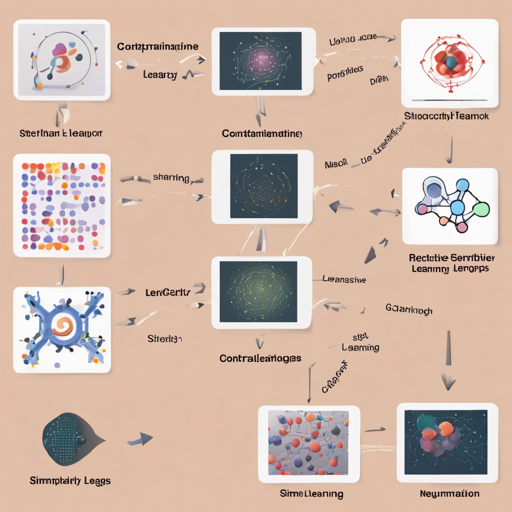Ever wondered how machines understand and interpret visuals, much like humans do? Welcome to the world of contrastive learning using SimCLR! In this guide, we’ll explore how to implement SimCLR in PyTorch for training visual representations effectively.
What is SimCLR?
SimCLR stands for Simple Framework for Contrastive Learning of Visual Representations. It is an innovative approach to self-supervised learning that leverages contrastive techniques to improve how models learn from unlabelled data.
Getting Started with Installation
Before diving into coding, let’s set up our environment. Follow these steps:
- Open your terminal.
- Run the following command to create a new conda environment:
conda env create --name simclr --file env.ymlconda activate simclrpython run.pyConfiguring Your Run
It’s vital to choose the right configurations for your model’s performance. The following command lets you set those configurations easily:
python run.py -data .datasets --dataset-name stl10 --log-every-n-steps 100 --epochs 100If you encounter any issues during debugging, you can run on CPU by adding the --disable-cuda option.
Precision Set Up
For those who want to utilize 16-bit precision for GPU training, there’s good news! You don’t need to install additional libraries like NVIDIA apex. Simply use the --fp16_precision flag, and Pytorch will handle it using built-in AMP training. More details on AMP can be found here.
Feature Evaluation Process
Once you have trained your model, evaluating features is crucial. The process involves:
- Learning features from an unsupervised dataset, such as STL10.
- Training a linear classifier on top of these frozen features.
- Evaluating on the test set to check performance.
For an interactive experience, check out this Open In Colab notebook which showcases reproducibility with structured evaluation.
Performance Results
Here’s a sneak peek of the performance metrics from SimCLR:
- Logistic Regression on STL10 with ResNet-18: Top 1 %: 74.45
- Logistic Regression on CIFAR10 with ResNet-18: Top 1 %: 69.82
- Logistic Regression on STL10 with ResNet-50: Top 1 %: 70.075
Troubleshooting Tips
If you run into issues along the way, consider the following troubleshooting strategies:
- Ensure your Python and conda versions are up to date.
- Double-check that all dependencies from
env.ymlare installed properly. - Refer to the error messages and consult documentation for specific adjustments.
- For more insights, updates, or to collaborate on AI development projects, stay connected with fxis.ai.
Conclusion
SimCLR offers a robust method to learn visual representations through contrastive learning, making it an essential tool for AI practitioners. When implemented correctly, it can significantly enhance model performance on visual tasks.
At fxis.ai, we believe that such advancements are crucial for the future of AI, as they enable more comprehensive and effective solutions. Our team is continually exploring new methodologies to push the envelope in artificial intelligence, ensuring that our clients benefit from the latest technological innovations.

